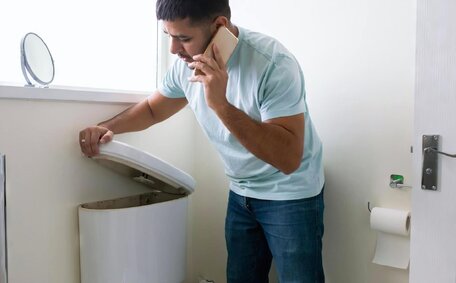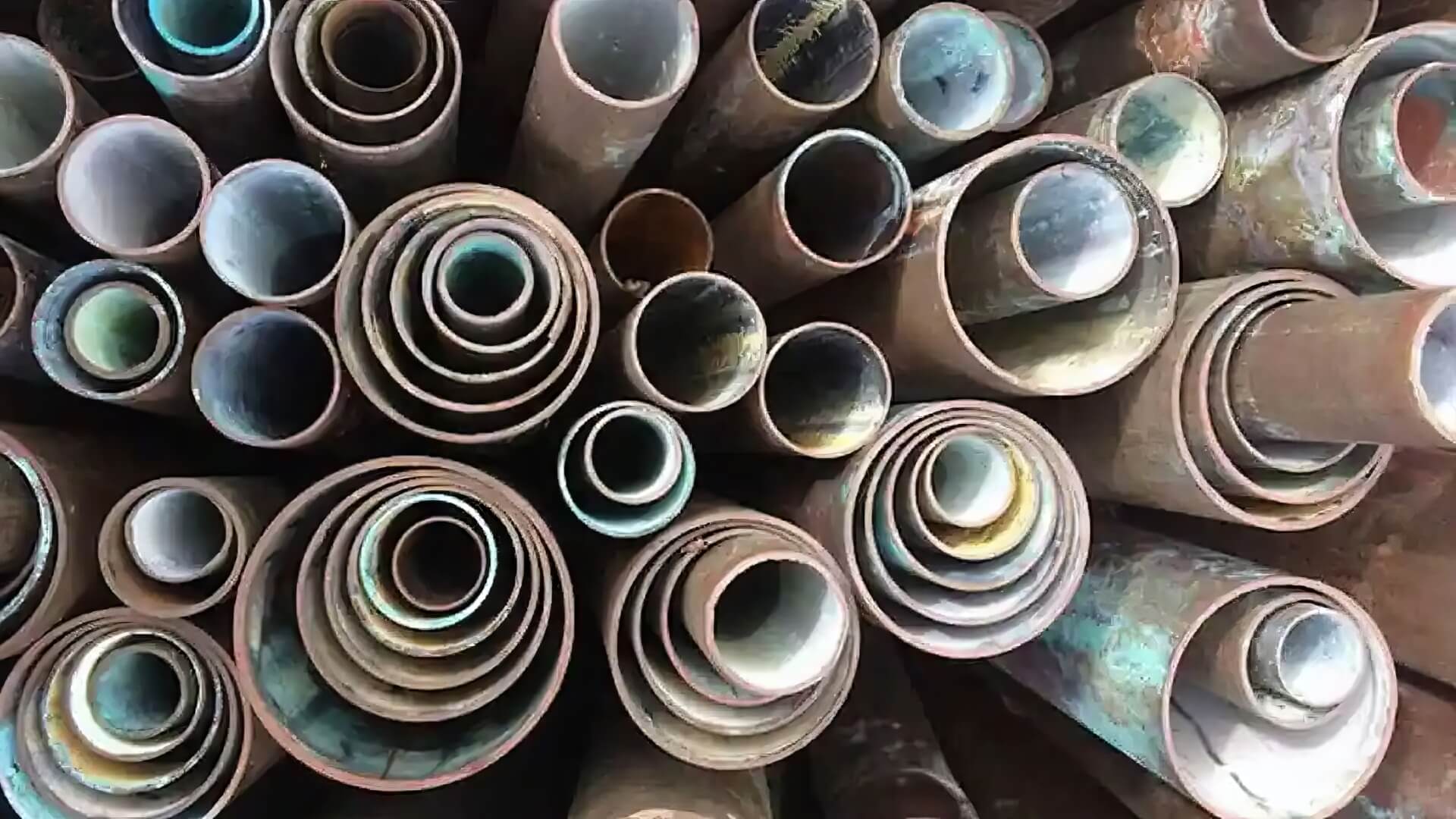
10 Signs Your Hot Water Heater Will Fail
If your water heater is old, leaking, rusty, noisy, not heating water properly or has low pressure, it could fail soon. Get your hot water system inspected today.
Read MorePipe relining, much like denture relining for a perfect fit, has emerged as a popular alternative to fully replacing ageing or damaged pipes. This trenchless method involves coating the inside of existing pipes with a protective epoxy resin liner. Once cured, the liner essentially creates a new pipe within the old one, akin to how a liner denture fits snugly over existing dental structures. Relining is less invasive than traditional replacement methods since it does not require extensive digging or destruction to home structures. It also tends to be more affordable and faster. We’ll overview the benefits of epoxy resin liners, which provide durability and safety for potable water systems. Relining is less invasive than traditional replacement methods since it does not require extensive digging or destruction to home structures.
These advantages make pipe relining an effective solution for restoring residential, commercial, and municipal plumbing systems alike.In this article, we will explore the materials and techniques used in pipe relining.
There are several key materials utilised in pipe relining projects throughout Mortdale and greater Sydney:
The above represent typical pipe lining materials used in residential and commercial plumbing applications. Which option makes the most sense will depend on site-specific considerations like pipe dimensions, accessibility, project scope and budget.
Epoxy resin has emerged as the most trusted lining material used in pipe relining projects. This two-part polymer offers unparalleled bonding strength once cured, allowing it to restore structural stability to compromised plumbing systems. Key benefits of epoxy resin include:
During pipe relining, epoxy resin is used to saturate felt tubes or combined with hardeners before being pumped into pipes. Once cured, it forms a robust, seamless new pipe wall able to restore flow capacity and pressure handling abilities.
At Mortdale Plumbing, we rely on advanced epoxy resin products to deliver reliable and long-lasting pipe remediation services.
Felt tubing represents another common material used to reline damaged pipes.
This fabric sleeve is soaked in liquid epoxy resin then inserted into the original pipe. Contractors use air pressure to invert or pull the resin-saturated felt tubing into place where it conforms to the pipe walls. The tubing cures as the resin hardens, effectively forming a robust new pipe lining.
Mortdale Plumbing leverages epoxy-soaked felt tubes to deliver trenchless pipe remediation services for residential and commercial customers. Felt tubing offers flexibility to navigate pipes with bends as well as small diameter lines where epoxy alone may not prove practical.
We typically apply this technique for pipes ranging from 25-300mm in diameter. It also works for spot repairs over short pipe segments. The resin-hardened liner then provides lasting structural renewal to decaying pipes throughout the region.
Polyethylene (PE) plastic tubing represents another material option for rehabilitating damaged pipes. PE’s flexibility, durability, and affordability make it well-suited for pipe relining across residential, commercial, and municipal applications.
We often use high-density polyethylene (HDPE) for pipe lining projects. Once inserted into the damaged pipe, heat and pressure fuse the HDPE into a seamless, jointless lining able to handle flowing water, gases, chemicals, and wastewater. Polyethylene offers corrosion and abrasion resistance while restoring structural integrity.
At Mortdale Plumbing, we leverage HDPE and sometimes cross-linked polyethylene (PEX) liners to trenchlessly renew decaying pipes up to 600mm in diameter. Polyethylene lining provides an economic, low-maintenance solution for ageing water, sewer, and gas pipes throughout the Sydney region. We custom-fabricate PE pipe liners based on site dimensions for superior fitting and performance.
Rigid polyvinyl chloride (PVC) piping can also serve as a pipe lining material for certain repair situations. Given its affordability, durability, and corrosion resistance, PVC makes for a suitable option to reline potable water service lines and building-level distribution pipes.
At Mortdale Plumbing, we often use PVC to bridge short segments of decaying pipe between 1 to 3 metres in length. By sleeving new PVC sections within existing pipes, we can restore flow capacity through damaged areas without full-scale replacement. This spot repair approach works well for isolated pipe sections with corrosion damage or leaks.
We also leverage perforated PVC liners as an alternative to traditional French drains surrounding home foundations. This perforated pipe wrapped in a gravel backfill creates an effective sub-surface drainage conduit to divert rainwater and prevent flooding against the foundation.
When it comes to selecting the optimal pipe relining material for a given project, there are several key factors we evaluate at Mortdale Plumbing:
In the end, no single liner material universally suits all pipe relining situations. At Mortdale Plumbing, our extensive remediation experience allows us to weigh the pros and cons of each option against client needs. We welcome conversations to help property managers and homeowners determine the most appropriate trenchless repair materials for their unique pipe infrastructure.
When dealing with critical building infrastructure that directly impacts human health, product safety stands paramount. This proves especially true regarding potable water contact materials like pipe liners.
We exclusively rely on epoxy resin formulas certified safe for drinking water systems by Australian and international testing agencies. Our products meet stringent health-based leaching and purity criteria for zero contamination risk. We also confirm liner installation procedures adhere to regulated potable water safety protocols.
Beyond potable lines, we implement trainer worker practises on all relining jobs in accordance with Sydney Build Authority policies. This covers risk areas like confined space entry, trenching safety, chemical handling, and equipment operation. We document project safety plans for client facilities referencing Australian Standard AS 2865-2009.
Through Maryldale’s focus on certified materials, training, and compliance, we mitigate project dangers to safeguard both onsite crews and the public. Productive partnerships with customers and a shared commitment to safety drive positive outcomes.
The effective service life of any pipe relining application largely hinges on the durability and longevity of the materials used. Key factors impacting the long-term performance of lining materials involve:
In general, correctly installed epoxy and polyethylene liners provide decades of reliable performance. Their advanced bonding and material properties supply exceptional structural renewal and corrosion resistance. We consistently achieve service lives of 50+ years in potable lines through proper liner selection and professional installation.
At Mortdale Plumbing, we recognise the dependencies both homeowners and commercial property managers place on safe, resilient building infrastructure. Our trenchless lining services not only restore pipe function but do so through materials engineered to last generations.
Pipe relining proves significantly more cost-effective than traditional pipe replacement. By preserving existing infrastructure, relining eliminates expensive excavation, demolition, and restoration expenses. We offer homeowners overall project savings of 50-80% compared to full piping upgrades.
The longevity of quality liner materials, similar to a durable denture base, also ensures greater value over time. With performance lifespans reaching 50+ years, pipe relining essentially delivers new system functionality at a fraction of replacement costs. The minimal disruption and enhanced safety benefits also reduce financial risks compared to traditional construction methods.
As Sydney’s trusted provider for over 20 years, Mortdale Plumbing leverages industry-leading technologies to deliver reliable pipe remediation services at competitive rates. We welcome the opportunity to show residential, municipal and commercial customers how trenchless lining can restore critical pipe systems while saving on the bottom line.
Before any pipe relining project, proper preparation of the existing pipes proves critical. The Mortdale Plumbing team thoroughly inspects all pipelines slated for restoration using CCTV cameras. This allows us to evaluate pipe condition, document problem areas, and custom-design solutions to match site requirements.
We also invest extensive efforts into cleaning and surface preparation prior to applying liner materials. Teams use high-pressure water jetting, scraping, and debris removal processes to create optimal bonding conditions. Proper curing of installed liners requires direct contact with cleaned pipe walls.
For potable water lines, we implement disinfection techniques after surface prep per public health protocols. This prevents microbial contamination as new non-metallic materials are introduced. We also confirm moisture levels and environment parameters to align with product specifications.
By investing in pipe inspection, customised plans, and methodical site prep, Mortdale Plumbing sets relining projects up for long-term success. Our attention to detail ensures liners adequately bond and restore structural integrity to ageing pipe systems throughout the Sydney region.
At Mortdale Plumbing, our teams leverage decades of remediation experience along with advanced diagnostics to assess pipe conditions before relining projects. We thoroughly examine factors like:
Armed with comprehensive pipe inspection data, we consult with commercial and residential customers to tailor optimal relining recommendations, materials, and application plans. Proactive condition assessments prevent surprises while allowing us to deliver effective solutions improving drainage, water supply, gas delivery, and wastewater functions region-wide.
Thorough pipe cleaning represents a vital preparatory step before any relining project. At Mortdale Plumbing, we invest extensive efforts into removing old coatings, corrosion deposits, microbial films, and accumulated debris from pipe interiors. Effective cleaning enables proper wetting and bonding between liner materials and the existing pipe walls.
Our teams utilise high-pressure water jetting to scour pipe surfaces down to bare substrate. We also scrape walls manually and capture solids for disposal. For difficult debris or heavy build-up, we may apply chemical cleaners before jetting. Proper PPE and containment protocols protect both technicians and the surrounding environment.
Clean pipes allow installed liners to achieve uniform adhesion and curing direct to structural walls. Thisdurability and integrity to deteriorating pipes. Clean pipes allow installed liners to achieve uniform adhesion and curing direct to structural walls.
Proactive cleaning paired with quality craftsmanship allows our trenchless linings to deliver exceptional restoration and decades of reliable performance.
If your water heater is old, leaking, rusty, noisy, not heating water properly or has low pressure, it could fail soon. Get your hot water system inspected today.
Read MoreIf you have plumbing fixtures that are over 10 years old or showing signs of wear like leaks and cracks, it’s important to replace them to prevent more costly water damage in the future. Replacing worn fixtures improves water efficiency.
Read MorePipe relining is a trenchless method that renews pipes from the inside out. It involves draining, drying and scrubbing the pipe interiors before applying materials like silicone, PMMA or epoxy resins to create a resilient, soft, temporary liner inside the existing pipes.
Read MoreMortdale, 2223 NSW
We will call back as soon as possible.




